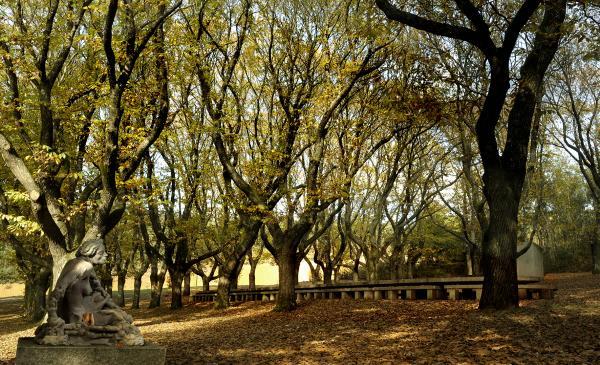The oratory is formed by two stone cubes, each one has not one face. Both are connected and even mixed. they look like two boxes of stone. The interior is a space opened to outside through three incisions that allow the entry of sunrise. From inside it is possible to see the external forest. It is like a small chapel or inhabitable cube that turns into a magic space.
The pavilion of water is a cube of stone with a small crack in the north face, like a door. It has a circular hole, in the centre of the top face, which allows the entry of Sun, rain or snow. Also, it has a small reservoir, with square plant, carved in the own stone.
Under the oculus, all around the reservoir, and attached to four exterior faces of the cube, there is a bench all around the table that is only interrupted to allow the entry and exit of the box.
Around bench, there are four fantastic form sculptures, on orthogonal pedestals. One in front of every face. Every figure is in a colour. A nymph sit on a round base, in a yogi position, looking at sky. One anthropomorphous figure, half man and half animal, with a skull, with part of its body hidden, rested on the knees and elbows, looking straight ahead. A strange sedentary mutation, looking to sideways; woman's metamorphosis with organic forms in decomposition. A monstrous sphinx, body half bird – half lion, with two heads, one with two horns and the other one with just only one horn and tongue out.
The parochial table, with 33 meters of length and 3,50 meters of width, forms a great table of stone with elliptical form, surrounded by a bench made with the same stone, well arranged for local meetings.
(Translated text, from the original by Alicia Fernández Dapena)


